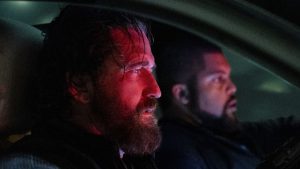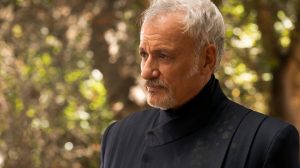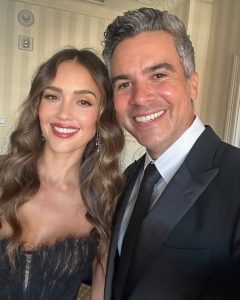
Alex Garland’s latest endeavor, Civil War, serves as a pulsating examination of a fractured America, yet I find myself longing for a deeper exploration of the conflict’s genesis. The film, produced by A24—reportedly its most ambitious project to date—delivers a striking narrative centered on photojournalists caught in the turmoil of a new civil conflict. Set against a backdrop that’s both gripping and unsettling, the film stars Kirsten Dunst, Cailee Spaeny, and Wagner Moura as they navigate the haunting landscape of a nation in turmoil.
As the film reaches its tumultuous climax in Washington, D.C., we witness a dramatic showdown culminating in the assassination of a rogue president, portrayed by Nick Offerman, who meets his fate at the hands of the Western Forces. While it is evident that his controversial attempt to seize a third term played a pivotal role in igniting the war, the film fails to delve into the underlying societal issues or political tensions that precipitated this dramatic upheaval. Although Garland chooses to focus on the experiences of the journalists rather than the war itself, this decision ultimately diminishes the impact of the overall narrative.
Civil War subtly hints at the origins and dynamics of this new conflict, yet it deliberately refrains from providing a comprehensive backstory. This omission hampers the film, leaving viewers grappling with questions that linger long after the credits roll. Despite my second viewing prompting greater appreciation of certain themes and moments, I still found myself pondering the pivotal question of “why” as the action unfolded. The portrayal of an alliance between California and Texas, while a creative choice, raises eyebrows given the stark political differences that exist in reality. Garland’s narrative opts for a simplified reconciliation that neglects the complexities of American politics.
Moreover, the lack of exploration into the personal histories of the main characters diminishes the emotional resonance of their arcs. Lee Smith, a seasoned war photographer expertly played by Dunst, is given little context regarding her colleagues Jessie and Joel, performed by Spaeny and Moura respectively. A deeper investigation into their backstories would not only enrich their characters but also provide intriguing insights into their motivations and stances within the war—information that remains tantalizingly out of reach.
Garland has openly stated that Civil War is intended to chronicle the experiences of journalists as they document a nation on the brink of collapse. He aims for a narrative devoid of political bias, instead spotlighting the consequences of division and polarization. While this approach is commendable, it raises the question of whether such neutrality can truly justify the absence of context regarding the war itself. The desire to comprehend how America arrived at such a polarized state is a natural impulse for viewers.
In summary, while Civil War presents a visually captivating and thought-provoking experience, its failure to address the origins and backstory of the conflict ultimately undermines its potential impact. Garland’s artistic intentions may prioritize the immediate experiences of the characters, but this choice also leaves a gaping void where audience connection could have flourished. Thus, I am left with a sense of frustration, wondering what deeper layers of understanding might have been uncovered had the film dared to explore the very origins of the conflict it depicts.





